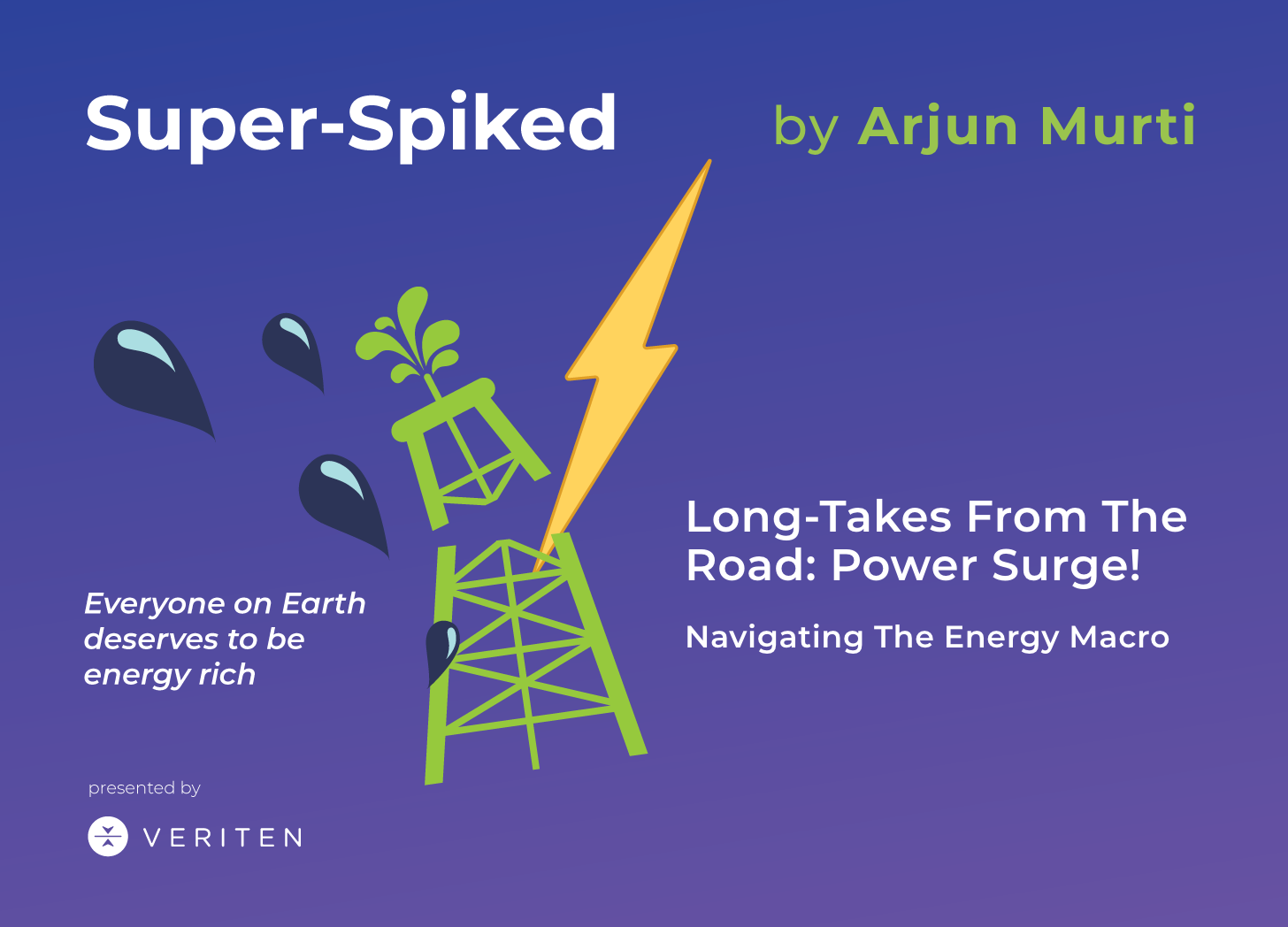Podcast Episode Details
Back to Podcast Episodes
Super-Spiked Videopods (EP82): Long-Takes From The Road: Power Surge!
WATCH the video on Substack by clicking the play button above or on YouTube (here).
STREAM audio only on Apple Podcasts (here), Spotify (here), or your favorite podcast player app.
We have just wrapped up an especially heavy 3-week stretch of board, management, and industry meetings. Included have been various meetings in and around the power sector. As someone who has spent his career on the other side of energy--i.e., oil & gas--it has been a lot of fun ramping up on the power side of the business. Historically oil & gas and power have been essentially two completely separate industries, each with their own macro drivers, corporate outlooks, and analyst coverage. And while today many differences of course remain, there are a growing number of areas of convergence. In this short video, we will give a few thoughts from our recent travels that we will expand upon in coming months. There are five points we want to highlight:
First, we think energy is in the early days of the 3rd major super-cycle in our lifetime. The first was the Arab Oil Embargo years of the 1970s and the second was the Chia/BRICs expansion of the 2000s. Both were at their core crude oil market events. Geopolitical security was the dominant narrative of the 1970s. Billion-person scale emerging market (EM) demand growth characterized the latter. The current super-cycle marries both drivers but it is power, rather than crude oil, that is at the heart of this era. AI datacenters rightfully get a lot of attention. But aging developed market grids that need new investment is also an important trend. Perhaps most importantly, the substantial unmet energy needs of the other 7 billion people on Earth will arguably be the greatest driver of global power demand. This super-cycle is all about global power needs on multiple fronts.
Second point and a key lesson from the mis-guided “The Energy Transition” era is that the world clearly is going to need all forms of energy, including many newer technologies where the timing of scaling economics is still uncertain. Examples of that last point are nuclear SMRs and enhanced geothermal to name just two. Power is an enabling driver of crude oil demand in the developing world. We suspect this is most visible in Africa today as an example. It is interesting and ironic: growth in renewables power is boosting oil demand.
Third point: energy sources and technologies are not in competition with each other for a finite pool of demand. That is the energy substitution argument being trotted out by those that in recent years believed in The Energy Transition. Rather, relative economics, reliability, and geopolitical security are going to cause periods of strong and weaker demand at various points of time for different areas. As an example, LNG priced at world oil prices we do not think displaces domestic coal demand in places like India and China. But it is a complementary and diversifying fuel for power generation which is important to having a healthy power market. And new areas like LNG trucks can help reduce dependence on crude oil imports from what would otherwise be the case. Again, it is additive, not substitutive.
Fourth, where crude oil cycles are inherently global in nature, power is typically highly local or regional, but today also has a global overlay via EM growth.
Fifth, we are perhaps most optimistic to see major energy consumers, in particular Big Tech and Big Industrials, proactively engaging in energy macro and policy discussions. We see this at Veriten via an expanding and increasingly diversified client base. We see it in the many meetings we have attended. This in our view significantly
Published on 2 weeks ago